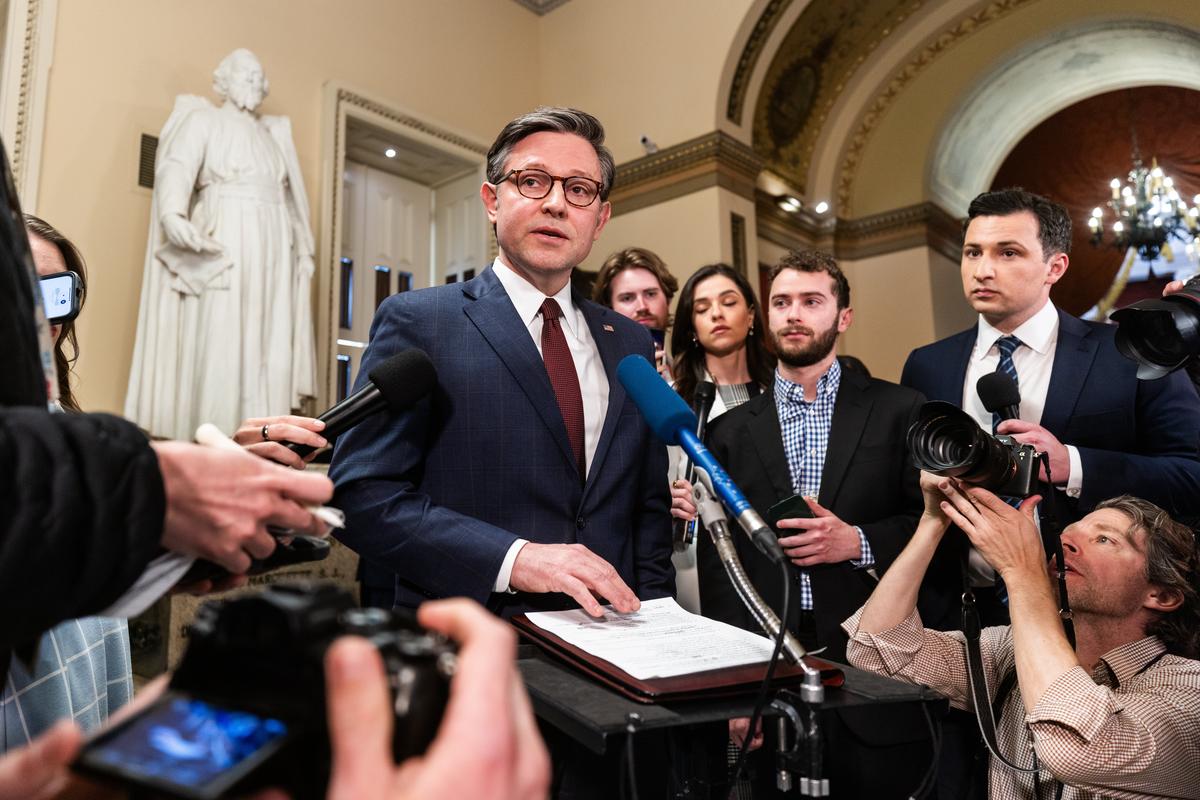The long-awaited US aid package, expected to arrive in Ukraine over the next few weeks, will help the country temporarily solve its ammunition shortage, but analysts worry it isn’t a viable long-term solution.
The US Senate finally approved the $61 billion (€57 billion) aid bill promising military assistance to Ukraine on Tuesday after months of wrangling. It is now expected to be signed into law by US President Joe Biden.
According to military analysts Kirill Mikhailov and Yan Matveyev, the first arms deliveries can be expected in Ukraine within a week of Biden signing the bill, given the Pentagon had promised to prepare the military aid package in advance.
The support will cover artillery ammunition, including missiles for Patriot air defence systems and HIMARS rocket launchers. Patriot systems are likely to act as a deterring factor for Russian troops, Mikhailov said. “We can expect a decline in Russian ballistic missile strikes on cities where [Patriot air defence systems] are deployed,” he noted, adding that more tank deliveries are expected too.
For the first time, Washington will also supply Ukraine with ATACMS, long-range ballistic missiles whose range extends to the entire area of annexed Crimea, Mikhailov added. “With the availability of new longer-range missiles, Ukraine will be able to drive Russian fighter jets and various missile launchers out of Crimea, which Russia uses to attack cities in the south of Ukraine.”

Speaker of the United States House of Representatives Mike Johnson speaks to reporters, 20 April 2024. Photo: Jim Lo Scalzo / EPA-EFA
The US support will likely not change the situation on the front line drastically nor stop the Russian offensive, but it will slow it down, the FT reported Sunday.
“Russia will still have an artillery advantage, it just won’t be as great”, military analyst Rob Lee told the FT.
The Wall Street Journal reported in February that the Ukrainian Armed Forces had been experiencing an ammunition shortage, and were forced to act defensively instead of going on another offensive.
The Commander-in-Chief of Ukraine’s Armed Forces Oleksandr Syrskyi warned in April that the frontlines had “deteriorated significantly” and that Russian troops had intensified their offensive, attacking Ukrainian positions near Lyman and Bakhmut.
Russian troops are also launching a major attack on Chasiv Yar in eastern Ukraine, an important site for Ukrainian defences, situated to the west of Avdiivka, which was captured by Russian forces in February. If Russia takes Chasiv Yar, they will have a foothold from which they can launch new attacks deep into Ukraine, Novaya Europe previously learned.
Ukraine is currently facing four issues which allow Russia to advance on the battlefield, according to Mikhailov: a personnel shortage, Russian aerial bombardment, a shortage of shells, and difficulties in establishing long-term defensive positions.
Despite the ammunition shortage temporarily being alleviated by the new aid package, there are fears that the US package will be the last in 2024 and that all subsequent military aid efforts will be much smaller, Ukrainian military analysts told FT.

A Ukrainian soldier shows ammunition during a military drill in Donetsk, Ukraine, 15 March 2024. Photo: Maria Senovilla / EPA-EFA
Experts are also concerned by how slow and difficult creating an aid package has been. “Ideally, the next package should be approved next autumn. But will the US be ready to do it in the midst of an election?” Matveyev wondered.
Personnel shortage remains a key problem for Ukraine, as Russia has been able to consistently recoup its battlefield losses by mobilising around 30,000 soldiers a month, FT estimated.
Ukraine has recently taken steps to boost conscription, with President Zelensky signing a law on 2 April to reduce the eligibility age for mobilisation from 27 to 25 years old. Ukraine’s parliament also adopted a new bill on 11 April tightening the mobilisation legislation.
The US aid package is thought to buy time for Ukraine to solve its military shortages issues, slow down the Russian offensive and reduce Ukrainian losses at the front, Mikhailov said.
Matveyev also believes that the aid package will allow Ukraine to stabilise the situation at the front, but this will only be enough to hold out until the end of the year.
Without a regular support plan, the Ukrainian army won’t be able to fight successfully, according to Matveyev.
“Such financing is not enough to support [Ukraine’s] offensive.” Matveyev said, noting that the current funding “will not solve all its problems”.
Besides, should the Ukrainian Armed Forces be unable to show success and progress on the front this summer, the US authorities may not be further motivated to create additional aid packages, Matveyev said, noting that the overall situation was “concerning”.
“If Ukraine has to wait until the end of winter, or spring 2025, there will once again be shortages,” Matveyev concluded.
Join us in rebuilding Novaya Gazeta Europe
The Russian government has banned independent media. We were forced to leave our country in order to keep doing our job, telling our readers about what is going on Russia, Ukraine and Europe.
We will continue fighting against warfare and dictatorship. We believe that freedom of speech is the most efficient antidote against tyranny. Support us financially to help us fight for peace and freedom.
By clicking the Support button, you agree to the processing of your personal data.
To cancel a regular donation, please write to [email protected]

